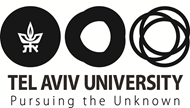Operational-strategy Seminars
| Date | Affiliation | Speaker | Presentation | Room |
|---|---|---|---|---|
| 05.11.24 11:15-12:15 |
Ben-Gurion University |
Moran Koren
|
Counterbalancing Learning and Strategic Incentives in Allocation Markets
This paper considers the problem of offering a scarce object with a common unobserved quality to strategic agents in a priority queue. Each agent has a private signal over the quality of the object and observes the decisions made by other agents.
We first show that, under the widely-used first-come-first-served sequential offering mechanism, herding behavior emerges: initial rejections create an information cascade resulting in inefficient waste. To address this issue, we then introduce a class of batching mechanisms. Agents in each batch report whether they would be willing to accept or reject the object based on their private signals and prior information. If the majority opts to accept, the object is randomly allocated within that batch. We prove that suitable batching mechanisms are incentive-compatible and improve efficiency. A key property of the mechanism is the gradual increase of the batch size after each failed allocation; the size is chosen so that it elicits as much information as possible without distorting the incentives of agents to report truthfully. Additionally, from a healthcare policy perspective, our results can shed light on the large wastage in organ allocation. In particular, wastage that arises due to herding may be reduced by applying adaptive simultaneous offering mechanisms. Joint work with Jamie Kang (Stanford), Faidra Monachou (Yale), and Itai Ashlagi (Stanford). |
301 |
| 09.01 13:00 |
Ricky Roet Green |
The Impact of Information-Granularity and Prioritization on Patients’ Care Modality Choice
Over the past few years, healthcare providers have widely adopted telemedicine consultations. On one hand, telemedicine has the potential of increasing the availability of medical appointments. On the other hand, due to the limitation of diagnosis and treatment methods, telemedicine may be ineffective and lead to in-person follow-up visits. Our model is motivated by this setting. We study a healthcare system as a queuing network that provides two types of services: telemedicine and in-person. Each service station is modeled as an M/M/1 unobservable queue. We assume that the in-person visit guarantees a successful treatment; whereas a telemedicine visit successfully treats patients with a probability that decreases with the patient’s condition complexity. If the telemedicine visit fails to succeed, an in-person follow-up visit is required. We assume patients are heterogeneous with respect to their service complexity levels and model their strategic choices between the two service channels as a queueing game. We characterize the equilibrium and the socially optimal patients’ choices. We investigate the impact of information granularity and find that improving patients' perception of their condition complexity level is not always optimal. This limitation can be overcome by simultaneously deploying a priority rule that can under certain conditions induce the social optimum.
|
406 | |
| 06.03 | University of Toronto | Opher Baron |
Queueing Analytics: Machine Learning and SiMLQ for Data Driven Simulation
The objective of this talk is to expose researchers to the vast possibilities of using modern machinery and data for implementing effective management analytics for processes that can be modeled as queueing systems. Such processes are ubiquitous in modern economies, e.g., customers waiting to service, inventory waiting for processing/transportation, payments and invoices waiting to be generated/cleared, computing tasks waiting for resources. I will thus discuss recent developments in queueing analysis based on several papers.
We will start by defining management analytics along descriptive, predictive, comparative, i.e., comparing performance indicators under different interventions, and prescriptive analytics dimensions. We then shortly discuss ML solution for a G/G/1 based upon [1] and its extension to G(t)/G/1 based on [2]. We would then discuss causal queueing models, based upon [3]. Not many organizations have queueing theorists (QTs) in their staff, but many organizations employ well trained Data Scientist (DS). Can DS use data to provide accurate comparative analytics without expertise in queueing? We suggest a data-driven representation of system building blocks to create a non-queueing simulator without prior knowledge of the system. We show that this approach is effective in comparative analytics, when analyzing expected waits for an GI/M/1 with speed-ups. |
301 |
Previous Seminars


